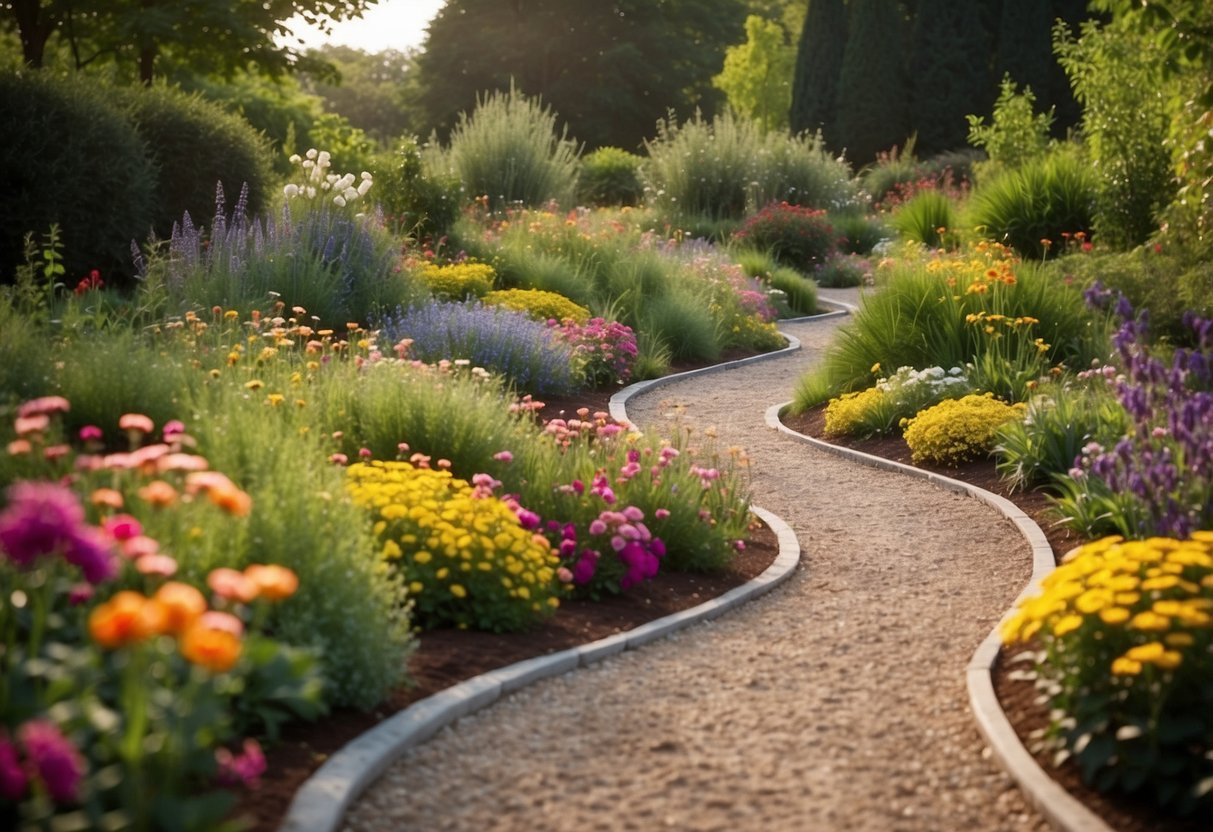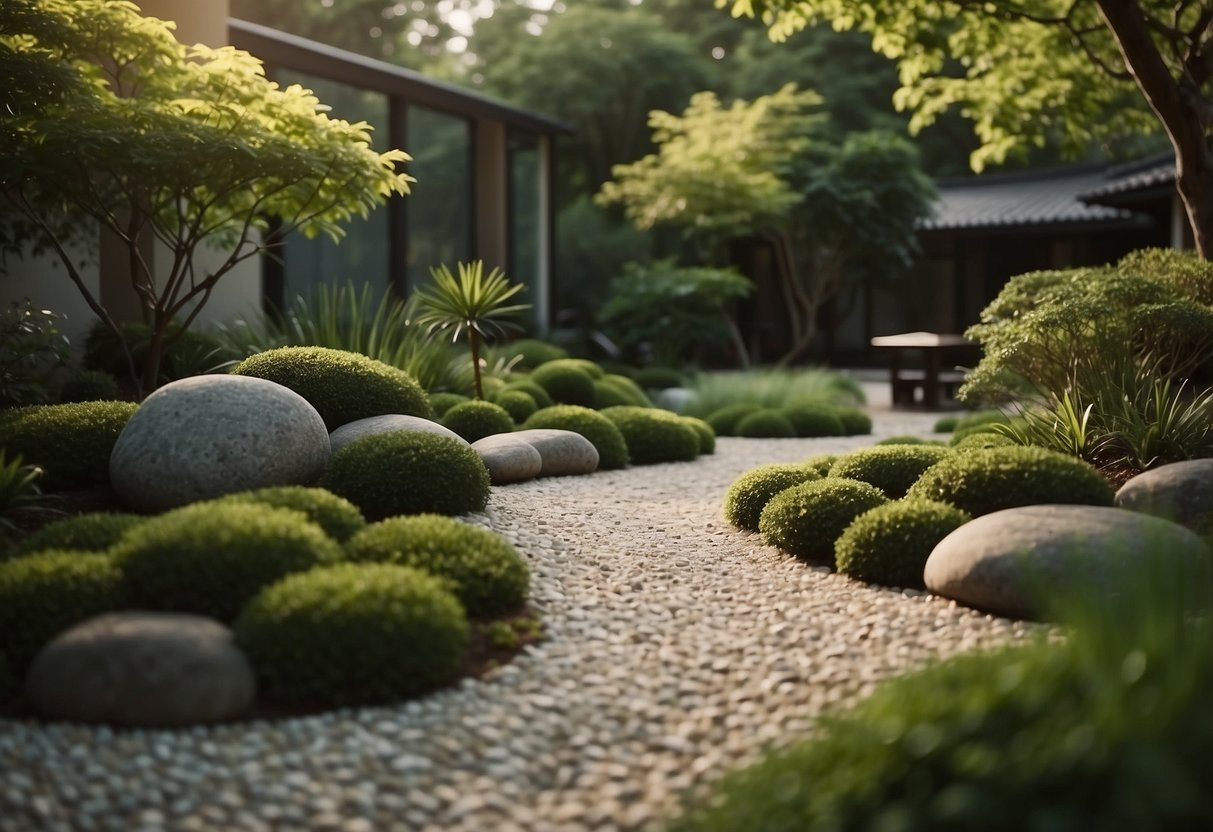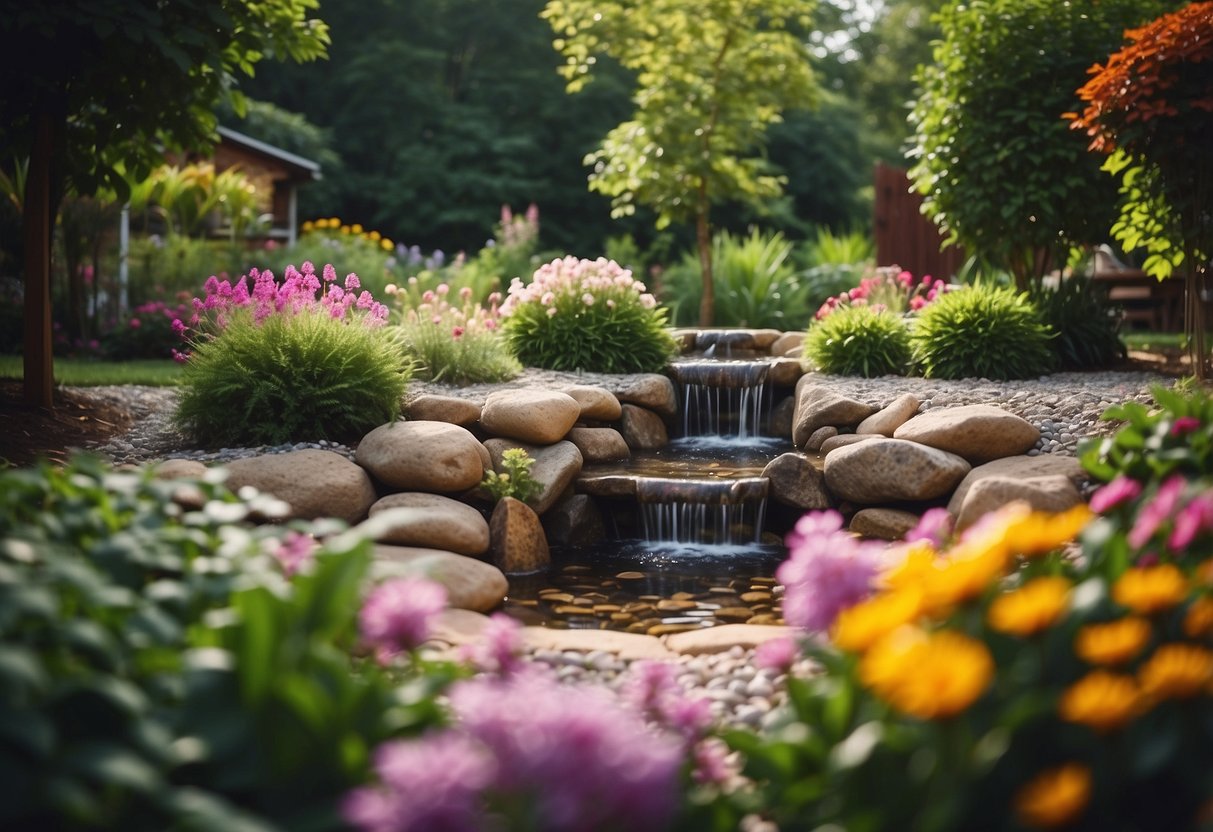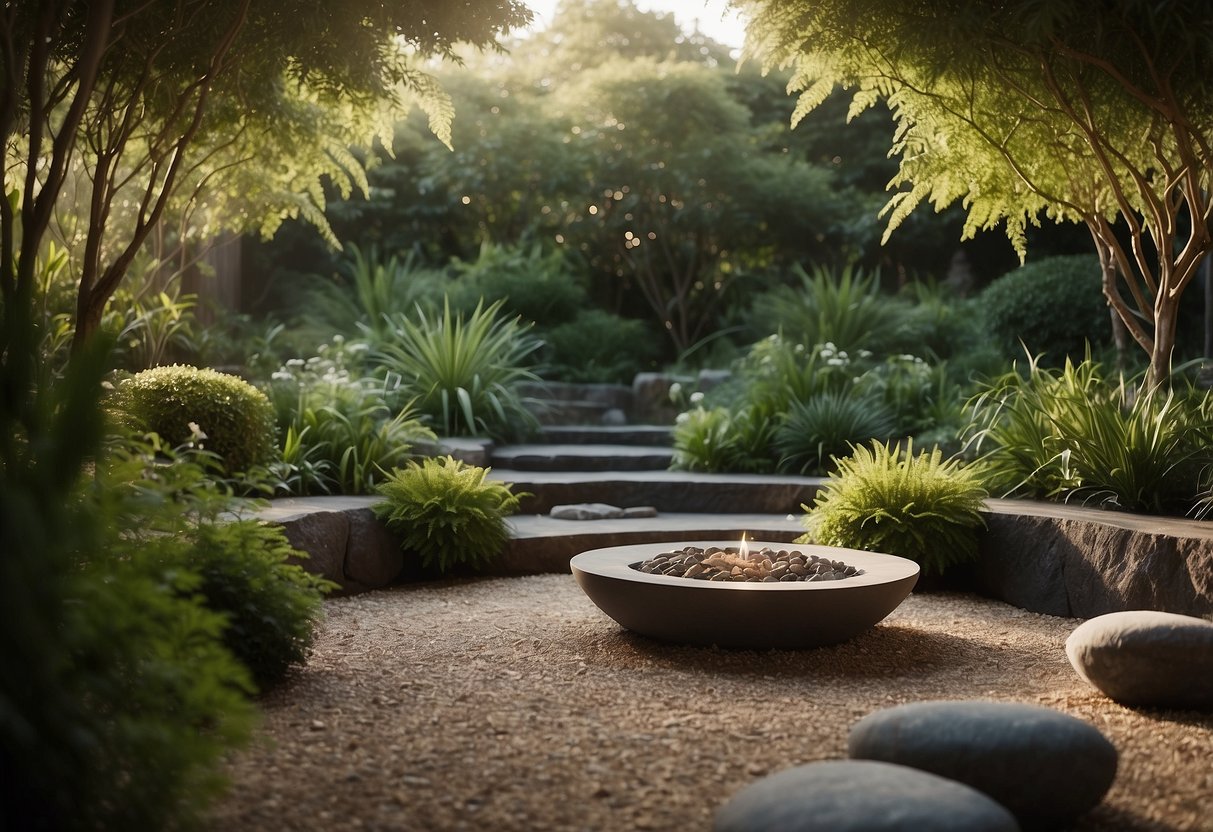Pea Gravel Garden Ideas: Creative Tips for a Lovely Landscape
Transforming your garden can be as simple as adding pea gravel to your outdoor space. This versatile material is not only affordable but also enhances the aesthetics and functionality of your yard. Why is pea gravel a great choice for garden enthusiasts? It offers good drainage, requires less maintenance, and creates a clean, modern look for various garden elements.

From pathways to seating areas, pea gravel can be used in many creative ways to improve your yard. You’ll find that integrating this material can simplify your gardening efforts while elevating the overall appearance of your outdoor space. Dive in to explore the various uses and benefits of incorporating pea gravel into your garden design.
1) Modern Zen Oasis

You can create a peaceful spot in your garden by using pea gravel to design a Modern Zen Oasis. Pea gravel’s smooth texture and natural look make it perfect for simple, calm designs.
Combine gravel with smooth stones and a few plants to create a very relaxing area. You might add a small water feature to boost the sense of tranquility and bring the space to life.
2) Backyard Fire Pit Retreat

Transform your backyard with a cozy fire pit retreat. Start by choosing an area for a fire pit and outline it with a border to keep pea gravel in place.
Add some comfortable seating, like Adirondack chairs, around the pit. You can arrange drought-tolerant plants such as prickly pear and agave to create a natural, beautiful barrier.
This setup is perfect for relaxing with friends and family while enjoying the warmth and ambiance of an outdoor fire. Consider using pea gravel to give the area a clean, finished look.
3) Pathway to Garden Delight

Create a charming garden path using pea gravel and stepping stones. This mix offers a rustic and inviting look.
Pea gravel pathways are easy to maintain and help prevent weeds from popping up. The stones and pea gravel blend well with plants and flowers.
Your garden pathway can wind through flower beds, adding interest and guiding visitors. Explore more ideas for landscaping with pea gravel.
4) Relaxing Water Feature Corner

Creating a relaxing water feature corner with pea gravel brings peace to any garden. Place a small fountain or pond as the centerpiece. The gentle sound of water adds a soothing element.
Surround the water feature with pea gravel to keep the area clean and attractive. Add some comfortable seating nearby for a perfect relaxation spot.
Consider adding plants like ferns and hostas. They thrive in the moist environment around water features and add greenery to your peaceful retreat.
Natural Seating Area

Creating a natural seating area with pea gravel is a simple yet stylish idea for your garden.
Start by clearing and leveling the area where you want the seating. Lay landscape fabric to prevent weeds from coming through.
Next, add a layer of pea gravel. The small, rounded stones provide a comfortable base.
Arrange rustic wooden benches or stone seating around the area. This setup blends well with the natural surroundings.
Decorate with potted plants and cushions to create a cozy, inviting space.
6) Charming Corner Planter

Transform a dull corner of your garden with a charming corner planter filled with pea gravel. This design is perfect for adding texture and interest to a small space.
Start by creating a simple frame with wood or bricks. Fill the frame with pea gravel and arrange your favorite potted plants on top.
You could also add a garden statue or a small water feature for extra visual appeal. This setup looks lovely and is easy to maintain throughout the year. Make your garden’s corner a standout feature with this simple yet elegant idea.
7) Small Pebble Zen Garden

Creating a small pebble Zen garden can bring peace and tranquility to your home. Use pea gravel for its smooth texture.
Arrange stones and plants to design a serene landscape. This setup helps promote relaxation and mindfulness.
Pebbles are easy to maintain, making your garden simple to care for.
For more ideas, check out these small Zen garden tips.
8) Rustic Herb Spiral

You can create a charming garden feature by building a rustic herb spiral. This design uses a spiral shape to maximize space and add visual interest.
Use larger stones at the base, gradually using smaller stones as you build up. Fill the gaps with gravel or rubble for drainage.
Plant your herbs starting with taller ones at the top like rosemary, then fill in lower sections with shorter herbs like thyme and basil. This setup not only looks appealing but also helps with water management by letting excess moisture drain away. For more detailed instructions, visit step-by-step guide.
9) Serene Meditation Nook

Creating a serene meditation nook can be a wonderful addition to your garden. Start by selecting a quiet corner where you can find peace. Use pea gravel to create a calm, low-maintenance surface.
Add some comfortable seating, like a bench or cushion. Surround this area with soothing plants and perhaps a small water feature. This will help you relax and focus.
Integrate larger stones or a small statue to enhance the tranquil atmosphere. This can help anchor your mind during meditation and make the nook feel even more special. Enjoy your peaceful retreat!
10) DIY Pea Gravel Patio

Creating a pea gravel patio is a fun and affordable project. Start by clearing the area and removing any grass.
Next, dig down about three inches to create a level base. This will help keep your gravel in place.
Lay down landscaping fabric to prevent weeds. This makes maintenance easier and keeps your patio looking great.
Add a border to keep the pea gravel from spreading. This can be made from wood, stone, or metal.
Finally, fill the area with pea gravel and spread it evenly. Water it lightly to settle the stones and enjoy your new patio!
Benefits Of Pea Gravel In Gardens

Pea gravel offers numerous advantages for gardens, such as minimizing upkeep, enhancing visual appeal, and preventing weed growth. These benefits make pea gravel an attractive option for any outdoor space.
Low Maintenance
One of the biggest perks of using pea gravel is that it requires very little upkeep. Unlike mulch, which needs to be replaced yearly, pea gravel can last for many seasons without needing much attention.
You won’t need to worry about frequent replacement or any special treatments. Simply raking the gravel occasionally to keep it even and removing debris, like leaves, will keep it looking fresh.
Drainage is another area where pea gravel excels. It allows rainwater to pass through easily, which helps prevent puddles and erosion. This means less work for you in keeping your garden in shape.
Aesthetic Appeal
Pea gravel can significantly enhance the look of your garden. Its small, smooth stones come in various colors, like gray, white, and brown. This allows you to match or contrast with other elements in your yard.
You can create beautiful paths, seating areas, or even simple borders around flower beds. Combining pea gravel with larger stones or pavers can add texture and depth to your garden design.
The versatility of pea gravel also makes it a great choice for different garden themes. Whether you prefer a rustic, modern, or classic look, pea gravel can blend in seamlessly to enhance your outdoor space.
Weed Prevention
Pea gravel helps control the growth of weeds. By creating a thick layer, it blocks sunlight from reaching weed seeds, preventing them from sprouting. This means you’ll spend less time pulling weeds and more time enjoying your garden.
To maximize weed prevention, it’s a good idea to lay down a piece of landscaping fabric underneath the gravel. This adds an extra barrier against persistent weeds.
Also, regular raking can help disrupt any early-growing weeds, keeping your garden clean and tidy. This simple step ensures your pea gravel stays effective in keeping unwanted plants at bay.
How To Install Pea Gravel

Installing pea gravel involves several clear steps to ensure a stable and beautiful finish. You’ll need to prepare the site, install a base layer, and then add the pea gravel.
Site Preparation
First, decide where you want your pea gravel area to be. Mark the outline with spray paint or string. Remove any grass, weeds, or debris from the area using a shovel.
Next, level the ground as much as possible. You may also need to dig down a few inches, depending on the amount of gravel you plan to add. For most installations, digging 2-3 inches deep is standard.
Lay down landscape fabric to prevent weed growth and help with drainage. This step will save you a lot of maintenance later. Secure the fabric with landscape staples, making sure it covers the entire area without leaving gaps.
Base Layer Installation
After preparing your site, add a base layer to provide stability. Usually, crushed stone or coarse gravel works best for this purpose. Spread the base material evenly, making sure it covers the entire area.
Aim for a layer about 2 inches deep. Use a rake to smooth it out, ensuring it’s level. Compact the base layer using a tamper or a plate compactor, especially if the area is large.
A firm base will help keep your pea gravel from shifting too much over time. Proper compaction is key, so take your time with this step.
Adding The Pea Gravel
Now, it’s time to add the pea gravel. Pour shovelfuls of gravel onto the compacted base. Spread it out evenly using a rake.
Aim for a uniform depth of about 2 inches. You may need to add or remove gravel in certain spots to achieve an even layer. Walk over the gravel or use a tamper to compact it slightly.
Edging around the perimeter is recommended to keep the gravel in place. Materials like metal, wood, or plastic work well for edging and provide a clean, finished look for your project.







